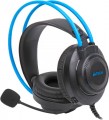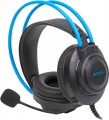The specific connection interface provided in the headphones. At the same time, some models may provide several options at once - these are either combined devices (see “Connection type”) or wired headphones equipped with additional adapters.
— micro-Jack (2.5 mm). A wired connector similar to the popular mini-Jack 3.5 mm (see below), but smaller in dimensions. Equipment with such a connection is rare - they are mostly miniature devices, where there is simply no room for a 3.5 mm connector. Accordingly, this interface has not become widespread among headphones: it is almost never found in its pure form; models with such a plug are usually supplemented with an adapter or cable for a mini-Jack.
—
mini-Jack(3.5 mm). Perhaps the most popular modern type of audio connector; If a device claims to have a headphone output, most likely it is a 3.5 mm jack. Accordingly, most headphones with a wired connection use this type of connector. It is worth noting that headphones with a microphone designed for such a connection are equipped with a special plug for a combined headphone + microphone audio connector (similar connectors are popular in portable gadgets and laptops). But with a jack intended only for “ears” without a microphone, such a plug may not work correctly. An alternative could be headphones equipped with two separate mini-jack plugs; See below for more details on this option.
—
mini-Jack (2 x 3.5 mm).... Models with two 3.5 mm mini-jack plugs. This option is guaranteed to mean that we are not talking about classic headphones, but about a headset with a microphone: one plug is used for headphones, the second for a microphone. Such models are convenient when used with equipment that has separate 3.5 mm jacks for “ears” and a microphone - for example, for a PC.
— Pentaconn (4.4 mm). It is a 5-pin balanced output. Pentaconn uses a larger plug compared to the mini-Jack; its size is 4.4 mm, which is stronger and more reliable than the 3.5 mm connection. Pentaconn's balanced connection makes it possible to work with high-power audio signals. Thanks to this connection, it is possible to transmit a signal over a fairly long distance. Accordingly, such a connector is relevant for headphones of the highest category.
— Jack (6.35 mm). The largest type of Jack-type audio connector found in modern technology. Outputs of this type are found mainly in stationary audio equipment - for portable devices they are too bulky, where it is easier to use a 3.5 mm mini-jack. At the same time, the 6.35 mm connector is considered a more suitable interface for professional and audiophile-grade equipment: it provides a more reliable connection, greater contact density and, accordingly, less likelihood of interference. Therefore, although relatively few headphones (mostly premium solutions) are equipped with their own Jack type connector, many models with a 3.5 mm mini-Jack plug are equipped with an adapter to 6.35 mm.
- XLR. A characteristic round connector with a locking lock and 3 contacts (there are other options for quantity). Typically, it is used to transmit an analog signal over a balanced connection. This connection provides high immunity to interference, typical for professional use; at the same time, the connector itself has quite large dimensions. In view of all this, the presence of XLR is relevant mainly for headphones designed for use with advanced stationary equipment.
— Bluetooth. The most popular wireless connection option in modern headphones. This is due to the fact that built-in Bluetooth modules are available in almost any modern smartphone, tablet or laptop, and appropriate adapters can be produced for devices without this module (for example, a PC). True, the sound quality with a traditional Bluetooth connection is relatively low, but to correct the situation, special technologies like aptX and aptxHD are increasingly being used (see “Codec support”).
It is also worth noting that Bluetooth modules can correspond to different versions (the latest for 2022 are Bluetooth 5.0, Bluetooth 5.1, Bluetooth 5.2, Bluetooth 5.3, Bluetooth 5.4). This point does not affect the sound quality, but it determines a number of additional nuances - communication range and reliability , the ability to work through walls and other obstacles, resistance to interference, etc. In modern “ears” you can find the following versions of Bluetooth:
- Bluetooth v 4.0. An update in which the capabilities of version 3.0 (classic + high-speed Bluetooth) were supplemented with a third format - Bluetooth LE (low energy consumption). This communication standard is intended mainly for transmitting small amounts of information - in particular, service data packets to maintain a connection. At the same time, the creators managed to combine economical energy consumption and a long communication range - it can reach 100 m. This has a positive effect on the stability of the connection.
- Bluetooth v4.1. Development and improvement of Bluetooth 4.0. If we talk specifically about headphones, the key innovation for them in this version is improved noise immunity when working near 4G (LTE) mobile communication devices (in earlier standards, Bluetooth and LTE signals could overlap, which led to failures). So, for use with a 4G smartphone, headphones with Bluetooth support of at least v 4.1 are definitely recommended.
- Bluetooth v4.2. Further, after 4.1, development of the Bluetooth standard, which mainly introduced a number of general improvements in reliability and noise immunity.
- Bluetooth v 5.0. Major Bluetooth update released in 2016. One of the most notable innovations was the introduction of two additional operating modes of Bluetooth LE: an increased speed mode (by reducing the range) and an extended range mode (by reducing the speed). In the case of headphones, the main significance of these innovations is to improve the overall reliability of the connection, increase its range and reduce the number of dropouts.
- Bluetooth v5.1. Update version v 5.0, in which, in addition to general improvements in the quality and reliability of communication, an interesting feature has appeared, such as determining the direction from which the Bluetooth signal is coming. Thanks to this, a smartphone or other gadget that supports this standard is able to determine the location of connected devices with an accuracy of a centimeter; This can be useful, for example, for finding headphones that have disappeared from sight but are still working.
- Bluetooth v5.2. The next update, after 5.1, is Bluetooth 5th generation. The main innovations in this version are a number of security improvements, additional optimization of power consumption in LE mode and a new audio signal format for synchronizing parallel playback on multiple devices.
- Bluetooth v5.3 was introduced at the dawn of 2022. Among the innovations in it, they accelerated the process of negotiating a communication channel between the controller and the device, implemented the function of quickly switching between the operating state in a low duty cycle and a high-speed mode, and improved the throughput and stability of the connection by reducing susceptibility to interference. When unexpected interference occurs in Low Energy mode, the procedure for selecting a communication channel to switch from now on has been accelerated.
- Bluetooth v5.4. introduced at the beginning of 2023, increased the range and speed of data exchange. Also in Bluetooth v 5.4, the energy-saving BLE mode has been improved. This version of the protocol uses new security features to protect data from unauthorized access, has increased connection reliability by selecting the best channel for communication, and prevents connection losses due to interference.
— Radio channel. Wireless connection via radio channel that does not use Bluetooth technology (see above). Such headphones are usually equipped with an adapter that connects to the signal source wired - for example, via USB or mini-Jack 3.5. This connection method is more universal than Bluetooth; it can be used even with devices that do not have wireless modules. In addition, the radio channel provides a long range (often up to several tens of meters), and the sound quality is quite high even without the use of special technologies. The disadvantage of this option is the presence of an adapter, which is not always appropriate: for example, it is more convenient to use Bluetooth headphones with a tablet or smartphone.
- IR channel. Another method of wireless connection, the peculiarity of which is that it does not use radio waves, but infrared radiation. Theoretically, the advantage of such a connection is its resistance to electromagnetic interference, the disadvantage is that it only works in line of sight. In practice, the situation is such that in most cases it is easier to use Bluetooth or a radio channel for a wireless connection. So this option is found exclusively in specialized devices for equipment equipped with their own IR outputs - in particular, among headphones for car monitors.
— USB A. Wired connection to a standard (full-dimensions) USB connector. This option is found exclusively among headphones designed for computers/laptops or gaming consoles. One of its advantages is that sound via USB is transmitted digitally and is processed not by the computer's audio card, but by the built-in headphone converter; such a converter often provides better sound quality than the mentioned audio card. In addition, multi-channel audio can be transmitted via a USB connection - this point will be especially appreciated by gamers. Another advantage is that when using USB headphones, specialized audio outputs remain free, and you can connect other equipment to them - for example, computer speakers or a vibration pad.
- USB C. A relatively new type of USB connector, used in both desktop computers and portable devices - as a successor to microUSB. It is not very different in dimensions, but has a more advanced design - in particular, it is made double-sided, which makes connection easier. Most often complemented by other connection options (they can be either wired or wireless).
- Lightning. A universal connector used in Apple portable devices - iPhone smartphones and iPad tablets - since 2012. Not used by other manufacturers. Accordingly, models with such an interface are designed specifically for Apple technology (primarily iPhone and iPod touch players). This type of connection is especially relevant given the fact that in the latest iPhones the manufacturer has completely abandoned a separate audio output, and the only option for connecting headphones is the Lightning port.
— Branded connector. A connection connector that does not belong to generally accepted standards and is used to a limited extent in equipment from one or several manufacturers. Such connectors are found mainly among headphones for mobile phones. However, due to general standardization, this option has practically disappeared from the scene. Theoretically, the branded connector is also the Lightning described above, but it is separated into a separate category due to the popularity of Apple technology.
